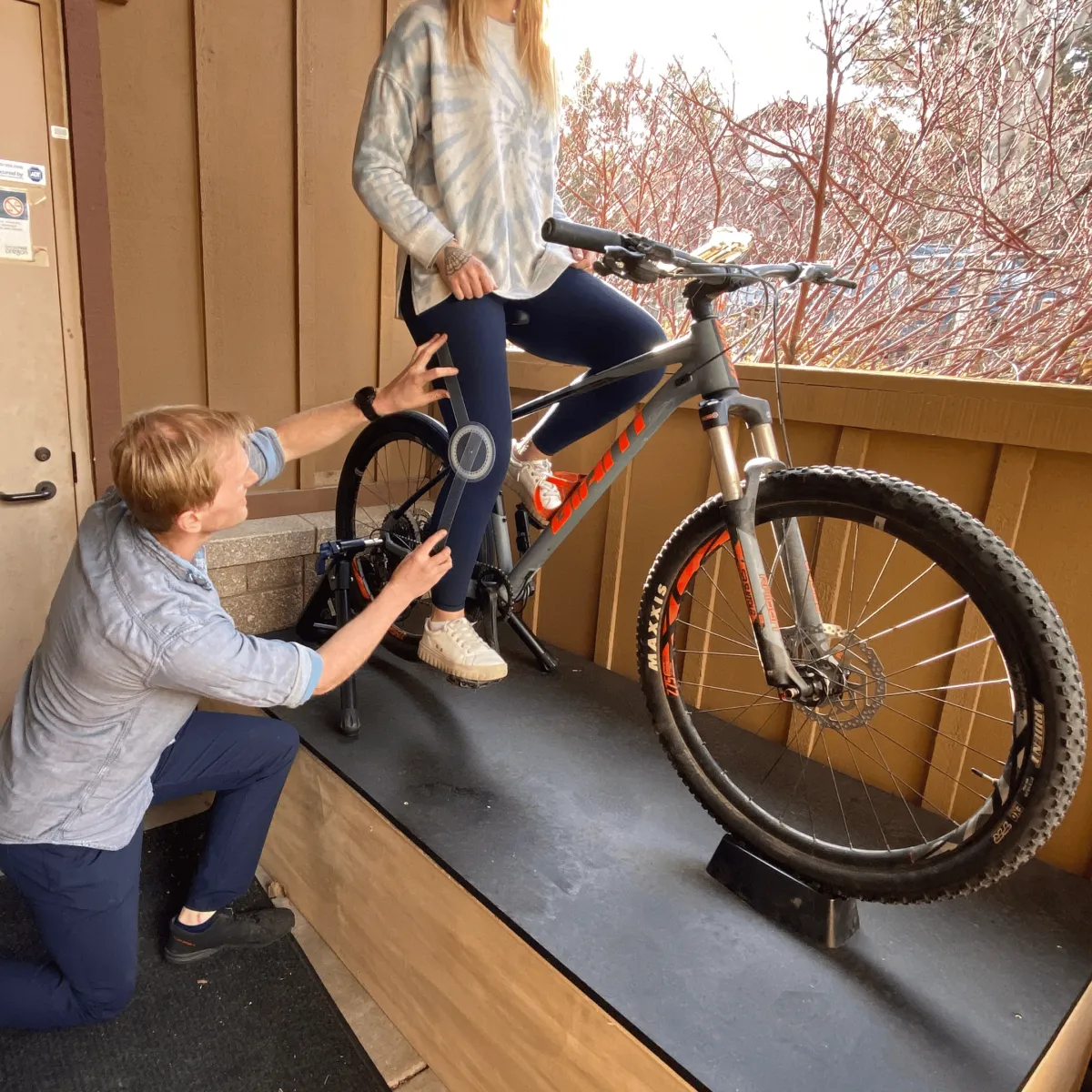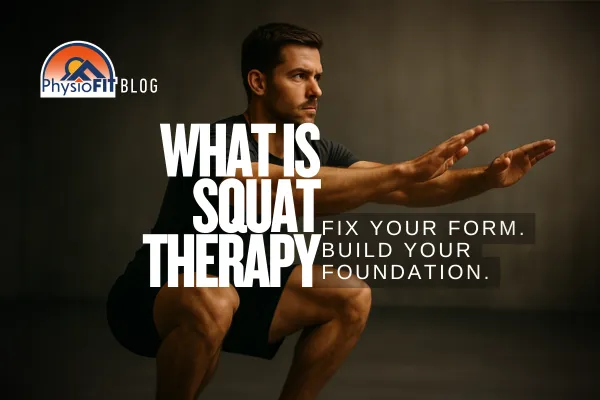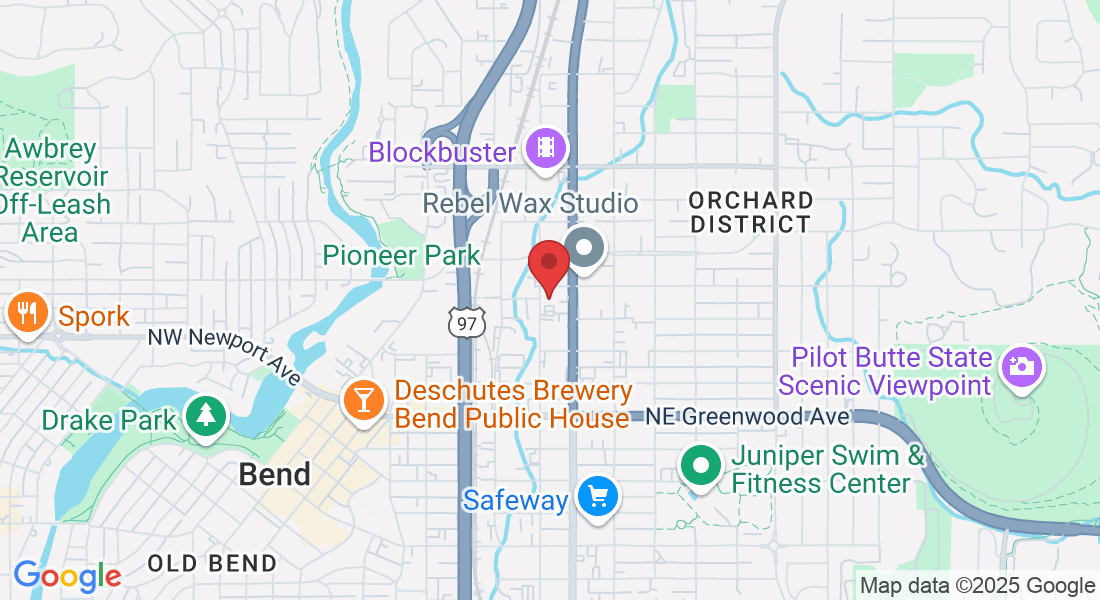Bike Fitting
Revolutionize Your Ride with a Bike Fitting at PhysioFIT
Welcome to PhysioFIT's bike fitting service, where your cycling experience is transformed. Our expert, Tanner Sommers, PT, DPT, brings unparalleled expertise in physical therapy and bike fitting to ensure you get the most out of every ride. Whether you're a seasoned athlete, a weekend warrior, or a daily commuter, our bike fitting service is tailored to meet your unique needs and goals.
Bike fittings at PhysioFIT are not just for professional athletes; they are for everyone who rides a bike. Our individualized approach caters to commuters, recreational riders, local athletes, triathletes, and mountain bikers. No matter your skill level or training background, a custom bike fitting can significantly enhance your riding experience.
The Many Benefits of a Proper Bike Fit
For Athletes: A proper bike fit significantly enhances athletic performance by aligning the rider's posture and bike mechanics to prevent injuries.
It optimizes the engagement of the right muscle groups, leading to increased power output and efficiency in pedaling, which is crucial for competitive cycling.
For Recreational Riders: Personalized bike fitting elevates the overall biking experience, ensuring greater comfort and enjoyment during rides.
It minimizes the likelihood of overuse injuries by correctly distributing the rider's weight and improving riding technique.
Riders receive valuable education on making adjustments to their bikes, which can provide immediate pain relief and prevent future discomfort.

What Does a Bike Fitting Involve?
Embarking on a bike fitting session at PhysioFIT is a comprehensive process designed to tailor your cycling experience to your body's unique requirements, lasting between 60 to 90 minutes. Led by the skilled hands of Tanner Sommers, PT, DPT, each session begins with a detailed assessment of your cycling goals, physical attributes, and any specific needs arising from unique conditions such as disabilities or the necessity for adaptive equipment.
Tanner employs a holistic approach, ensuring that the bike fitting transcends traditional measurements. He meticulously analyzes your biomechanics, considering factors like flexibility, limb length, and joint mobility, to customize the bike to your physiology. This customization is crucial not only for comfort but also for efficiency and power optimization during your ride.
Throughout the fitting, Tanner also provides personalized interventions that may include corrective exercises, stretches, or technique adjustments to enhance your cycling posture and prevent injuries. Moreover, he offers tailored education on how to maintain the ideal bike fit, addressing any concerns related to bicycle ergonomics. This education often encompasses guidance on self-assessment and making minor adjustments at home, ensuring your bike continues to fit perfectly as your body adapts and cycling proficiency evolves.
The fitting session is not just a one-time adjustment; it's an educational experience that empowers you with knowledge about your body's interaction with your bike. This session ultimately aims to address and alleviate any bicycle-related injuries or discomforts, ensuring that every journey you take is both enjoyable and ergonomically beneficial.
The Importance of a Regular Bike Fitting
Cycling is not a static sport – as you pedal forward, your body is also advancing in its capabilities and conditioning. This dynamic progression calls for an equally dynamic approach to how you fit your bicycle. Regular bike fittings are a cornerstone of maintaining peak performance and comfort. Here's why making bike fittings a regular part of your cycling routine is indispensable:
Adaptation to Physical Changes: As you cycle more, your body will naturally develop in strength, flexibility, and endurance. Regular bike fittings ensure that your bicycle is always aligned with these evolving physical attributes.
Injury Prevention: Over time, even minor misalignments can lead to discomfort or injury. Consistent bike fittings can preemptively identify and correct these issues before they become problematic.
Optimized Performance: As your skills improve, you may benefit from different settings that a bike fitting can provide, such as adjusting the seat height or handlebar reach to improve power and efficiency.
Enhanced Comfort: With regular use, bike components can shift or wear down. Regular fittings check and adjust these components to maintain the comfort you’re accustomed to during rides.
Alignment with Training Goals: Whether you're training for a race or building endurance, your bike should complement your goals. Regular fittings tweak your bike to match your training intensity and objectives.
Seasonal Adjustments: Changes in weather and seasons can affect your bike's performance and your comfort. Regular fittings can account for these variables, ensuring a comfortable ride year-round.
Personal Growth: As your cycling technique refines, what worked for you initially may no longer be ideal. Regular bike fittings adjust to your improved technique and riding style.
Technological Upgrades: If you upgrade your bike with new components, a fitting will ensure these new additions are perfectly configured to your body.
Aging Gracefully: As we age, our bodies require different support. Regular fittings can adapt your bike to your changing ergonomic needs over the years.

Meet Tanner Sommers, PT, DPT - Your Bike Fitting Expert
Tanner Sommers, a highly experienced physical therapist from Springfield, Illinois, leads our bike fitting services. With a background in Exercise Science and a Doctorate in Physical Therapy from Saint Louis University, Tanner is not only an expert in physical therapy but also a certified bike fitting specialist.
His holistic approach combines cutting-edge techniques like EMG/NCV, Level III dry needling, and virtual reality rehabilitation to provide a bike fitting experience that’s both scientific and personalized.
Please Note: The information provided on our website is intended for general education and is not a substitute for professional medical advice. Each individual's situation and body is different. Therefore, what may work for one person may not work for another. We care about your well-being and advise you to reach out to us to discuss your specific needs before implementing any advice from our website.
Your Source for All Things Physical Therapy in Bend Oregon
The PhysioBlog

What Is Squat Therapy?
What is Squat Therapy?
Squat therapy is a focused training method designed to improve the motor control, posture, and mechanics of an individual’s squat. It is especially beneficial for those with immature squat patterns or poor squat mechanics. By using specific drills and feedback, squat therapy helps clients refine their movement patterns, enhancing stability, mobility, and overall performance.
Why is Squat Therapy Important?
The squat is a foundational movement in fitness and daily life, engaging multiple muscle groups and promoting functional strength. However, not everyone performs squats with optimal technique. Poor squat mechanics can lead to discomfort, inefficient movement, or even injury over time. Squat therapy addresses these issues by identifying and correcting faulty movement patterns, ensuring safer and more effective squatting.
Who Can Benefit from Squat Therapy?
You might benefit from squat therapy if:
Your air squat looks off: If your bodyweight squat (air squat) lacks depth, control, or symmetry, it could indicate deficiencies in mobility, stability, or motor control.
Your squat improves with load: Some individuals exhibit poor mechanics during bodyweight squats but demonstrate improved form when adding weight. This could suggest a lack of proprioception or engagement during lighter, unloaded movements.
Common issues observed:
Knees caving inward (valgus collapse)
Limited range of motion (e.g., shallow depth)
Poor balance or excessive forward lean
Lack of coordination or control
How Does Squat Therapy Work?
Squat therapy involves a combination of drills, cues, and tools to address deficiencies and retrain proper movement patterns. Key elements include:
Assessment:
Begin with observing the air squat. Look for common faults such as limited depth, instability, or asymmetry.
Compare the air squat to a loaded squat to identify discrepancies in mechanics.
Corrective Drills:
Wall squats: Perform squats facing a wall to encourage upright posture and proper knee tracking.
Box squats: Use a box or bench to guide depth and reinforce control.
Tempo squats to a target (our favorite!): refers to a squat drill where the individual performs squats at a controlled pace (tempo) while aiming to reach a specific target, such as a box, bench, or marker.
Controlled Tempo: The movement is intentionally slowed down, often broken into phases like a 3-second descent, a brief pause at the bottom, and a 1-second ascent. This slows the motion to enhance muscle engagement and motor control.
Targeted Depth: The target ensures consistency in squat depth, helping individuals practice reaching an ideal range of motion without collapsing or losing form.
Why It's a Favorite: This drill is versatile and addresses multiple issues, including depth consistency, posture, and strength. It also provides immediate feedback, as missing the target indicates a loss of control or improper technique.
Cueing and Feedback:
Use verbal or tactile cues to guide proper alignment and engagement.
Record and review videos to provide visual feedback on progress.
Recognizing Progress
As you work through squat therapy, improvements might include:
Increased squat depth without sacrificing posture or control
Improved knee tracking and stability
Greater confidence and comfort in the squat movement
Enhanced ability to transition these improvements to loaded movements
Final Thoughts
Squat therapy is an invaluable tool for anyone struggling with poor squat mechanics. Whether you’re a beginner looking to build a solid foundation or an experienced lifter aiming to refine your technique, this approach ensures that your squats are safe, efficient, and effective. By dedicating time to perfecting the fundamentals, you’ll set yourself up for long-term success in fitness and beyond.
Copyright PhysioFIT 2025 . All rights reserved


